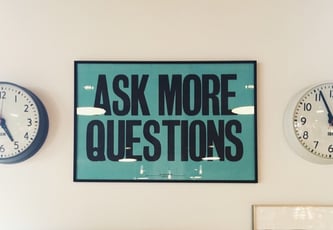3 min read
Scientist Discovered Why Most Traders Lose Money – 24 Surprising Statistics
“95% of all traders fail” is the most commonly used trading related statistic around the internet. But no research paper exists that proves this...
Whenever I am helping other traders, one of the first things I do is help them understand their real trading strategy.
You’d assume that traders know their trading strategy but this is far from the truth. A wrong understanding of what your strategy is, or what it is not, can lead to many problems.
To my surprise, I am often finding that traders don’t even have a trading strategy.
Many traders will say that they are “price action traders” but what does this actually mean? Nothing! The candles on your charts are price action, support and resistance are based on price action, moving averages are calculated based on price action and even indicators are nothing but a different way of manifesting price action.
Then traders will say that they trade “naked charts” but is this more helpful? Absolutely NOT because trading naked charts is too vague as well. Do you trade formations (which ones), do you trade single candlestick patterns, do you trade breakouts, trends, ranges or do you use horizontal levels?
Many traders believe that they have a strategy but they don’t and the lack of having a well-defined trading system is at the root of all trading problems.
How serious are you about trading? Do you really want to make a difference and change your trading for the better? Or is trading just an expensive hobby? I am pretty sure that I know the answer and you would not be here if trading wasn’t important for you. So take the time to finally make a difference and start becoming the professional trader that you aspire to be.
 I hope that by the end of this article, you’ll have a clearly defined strategy because it will help you in all areas of your trading. A lack of a trading system creates confusion, inconsistency and traders won’t find good trades on a regular basis.
I hope that by the end of this article, you’ll have a clearly defined strategy because it will help you in all areas of your trading. A lack of a trading system creates confusion, inconsistency and traders won’t find good trades on a regular basis.
So let’s take a look at what a trading strategy really is and which questions you have to answer. Here is a list of bullet points and questions and once you have a clear answer for each point, you have a trading strategy.
At the end, I am also including a PDF that you can use as your own template and define your trading.
Do you trade ranges, trends, early trends, breakouts, late trends or consolidations?
You should not trade all timeframes and you should be specific about the timeframe choice. Every timeframe behaves differently.
If you are a Forex trader, be clear about the specific Forex pairs you trade. If you are a stock trader, know whether you trade penny stocks, blue chips and what exchanges. And so on.
Do you trade to supplement your income? Do you want to trade full time? Do you just want a hobby? Becoming clear about your expectations and goals is, of course, important.
I, for example, am an early trend trader and I trade 3 main setups. I am very clear about those setups and how they are defined.
For each setup, you need to establish precise rules. Which indicators do you use, what are the candlestick patterns and other chart conditions? I create a checklist for my trading with precise signals that I follow.
This is a great practice because it forces you to become very clear about your trades.
Here you can work with screenshots. Collect screenshots from your best setups and see how they compare to your other trades.
What are the rules for stop placement?
How do you handle targets? Do you see fixed take profit order – and if so how? Or do you let your profits run open end? If that is the case, what is your exit strategy?
Do you trail stops, leave the stop loss untouched, don’t manage trades at all or what are your rules?
Most amateurs randomly flip through timeframes and do not know what they are looking for. How do you avoid that?
Do you write a trading plan for your trades? Do you use price alerts? How do you stay on top of things? In my trading, I write my trading plans each weekend, I set price alerts at key levels and I have watchlist with a list of setups that I am following. Missing trades becomes almost impossible.
It’s also important that you have a schedule and that you know when to do your analysis. It’s too easy to skip your routine if it’s not scheduled and pre-planned.
Being glued to the screen won’t make you a better trader and screentime has to be reduced. I, for example, only watch charts on the weekend when I create my trading plans and during the week I check my charts in the morning, in the evening and when a price alert goes off.
Do you risk 0.5%, 1%, 2% or more per trade? Do you differentiate between risk levels or do you always use the same?
What if you have 4 open trades at the same time? How much can you risk then?
Do your trades need a minimum Reward:Risk ratio and how do you deal with trades that have a smaller RRR?
When you are in a trade, how do you cut losses or do you add to winners? Be very clear about the approach here to avoid impulsiveness.
When you have lost a certain amount of your trading account, do you stop, do you adjust your risk or what do you do?
Trading is a serious business and you have to give it the seriousness it deserves.
I fully understand that writing your trading business plan takes time and effort and especially if you are new, this might seem like an overwhelming task.
In the beginning this becomes a trial and error task and you just have to start somewhere. Of course, it won’t be perfect but it will be a start and you can adjust it along the way.

3 min read
“95% of all traders fail” is the most commonly used trading related statistic around the internet. But no research paper exists that proves this...

3 min read
Trendlines can be great trading tools if used correctly and in this post, I am going to share three powerful trendline strategies with you.

3 min read
Choosing the right trading journal is essential for traders wanting to analyze performance, refine strategies, and improve consistency. In this...
